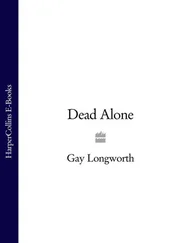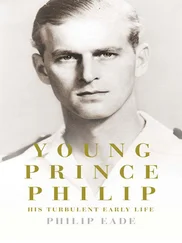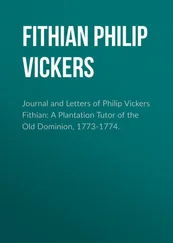For King Alexander himself there were:
Forty sables worth 100 rubles,
A thousand ermine pelts worth 30 rubles,
Fifteen fish teeth [probably walrus tusks] worth 70 rubles,
A cuirass worth 20 rubles,
A helmet worth 20 rubles
as well as three falcons, which were not valued 12 — perhaps priceless — one of which specialized in catching swans. Valuable gifts were also taken to present to princes and mirzas (to use the Persian term for prince) of the neighbouring Avars and Kabardinians. But the shamkhal of Tarku was to be given only a warning to send hostages for his future good behaviour if he did not want war.
This particular attempt to expand into the eastern Caucasus was to end in failure in 1594 when a Russian force, deserted by its Muslim allies, was routed. A joint attempt with Georgian forces was also to come to grief in 1605, though the attempts did not end there. In any case the 1594 mission had other aims, including cultural penetration. The mission, which was given an escort of nearly 300 soldiers and 50 Terek Cossacks, also included priests who were experts in liturgy and canon law and three icon painters. Clearly Moscow wanted the Georgians to conform to its version of the religiously correct. This had become all the more important now that the see of Moscow had been raised to patriarchal status, and the Catholic Church was campaigning not only against the Protestants, but against Orthodox Christians too.
The Catholics were to register another victory with the foundation in 1596 of the Uniate Church of Ukraine, a communion which retained most of the Orthodox liturgy and permitted parish priests to marry, but which recognized the Pope’s authority and (albeit with greater misgivings) the Gregorian calendar. At the same time the Orthodox Church ceased to have any official existence in Lithuania, of which Ukraine then formed a part. After most of the Lithuanian elite had been lured away from Orthodoxy by the promise of all the privileges of the Polish nobility if they became Catholics, the new confession threatened to suborn much of the Ukrainian clergy and the peasants too.
There was resistance. The immensely wealthy Prince Konstantin Ostrozhsky championed the cause of Orthodox Christianity. He funded a school and a Slavonic printing press, sponsored writers, and summoned up moral support from the patriarchs of Alexandria and Constantinople. Orthodox merchants organized confraternities and also founded schools, and Cossacks raised violent protests against Polish influence and Polish rule. In time the various strands of opposition were to combine and the movement was to gather a force which Moscow was able to exploit (See Chapter 7). However, the mobilization of these different interests was slow and their co-ordination was difficult. Besides, the Orthodox cause boasted too few educated polemists to be able to compete with the barrage of propaganda mounted by the Jesuits, and by the turn of the century the Tsar was preoccupied with other problems. 13
In 1598 Tsar Fedor died, and his death precipitated a crisis for the state. Fedor was the last of his line. The Riurikid dynasty, which had produced too many claimants to the crown when lateral succession was allowed, produced too few now that claims were confined to vertical succession. It was an unexpected misfortune. Of the three sons whom Ivan IV had fathered, Ivan, the eldest had died accidentally. Ivan had struck him in a fit of temper, and, falling awkwardly, the child fractured his skull. The youngest, Dmitrii, had died of misadventure playing with a knife. Now, seven years later, Fedor had died without leaving an heir. As a church historian put it, the royal house of Russia was left without a tenant. 14Who, then, should succeed?
There were several hopefuls. Some, including the Romanovs and Nagois, were related to Ivan’s wives; others, like Prince Vasilii Shuiskii, claimed both distinguished ancestry and ministerial experience. Boris Godunov, though not of princely descent, was also a candidate. As the late Tsar’s brother-in law, a senior minister and a senior courtier he was well-positioned, though Shuiskii and Fedor Romanov also sat on the boyar council. Boris’s particular advantage was the powerful support of his friend Patriarch Job (whom he himself had been instrumental in appointing); he was also well qualified in terms of both native ability and personal qualities, and, insofar as he was known, popular. The distinguished historian A. A. Zimin describes him as resolute and far-sighted, as capable of dissembling and cruelty when circumstances demanded, but also generous and charming. 15In fact he was the obvious choice for tsar, and an Assembly of the Land duly endorsed his election.
Boris made a decent show of reluctance, refusing the crown three times. The official record of the meeting has its members clamouring long and loud for him to change his mind:
‘We want Boris Fedorovich [Godunov] to be Tsar. There is no other [candidate]. God himself has chosen him…’ And… the most holy Patriarch… said: ‘Blessed be God who willed this. The Lord’s will be done, for the voice of the people is the voice of God.’ And therefore… by the grace given us through the Holy Ghost we have all installed… Boris Fedorovich [as] Autocrat of all Russia, Sovereign of the Russian land.
Boris’s lack of hereditary credentials, was acknowledged, but it was pointed out that the Bible recorded cases of kings ‘invested with the purple of sovereignty who… were commoners… and yet ruled… according to God’s will honourably and justly’. 16
So on 3 September 1598 Boris was enthroned as tsar amid general acclamations. Huge cannon boomed out their salute, and embassies were sent out far and wide to announce the accession. Yet he took no chances. Potential rivals — including several Nagois and Romanovs — were taken under escort to distant prisons, an amnesty for common criminals was declared, a tax holiday was granted, and largesse was distributed to widows, orphans, foreigners in Russia’s service and the people of Moscow. 17So Russia acquired an able, legitimate tsar. A succession crisis had been averted.
Russia’s prospects seemed good. Tsar Boris was experienced in all the major branches of state policy; he commanded the loyalty of state servants, both military and civil; and, in early middle age, he was at the height of his powers. Moreover, his son Fedor was a healthy and intelligent boy. Russia seemed destined to prosper under the new regime. Yet the seven lean years that followed were lean indeed, and by the time they ended Boris was dead, his heir murdered, the realm in ruins, and the enemy at the gate.
The cause was not the legacy of Ivan the Terrible, though this contributed to the disaster, and the supposed murder of the Tsarevich Dmitrii was merely incidental. The fundamental reason was a change in weather patterns known as the Little Ice Age. Bad weather caused repeated famines and associated ecological problems and epidemics. These in turn affected agriculture, and promoted migrations and public discontent. Soon social distress spilled over into political protest, giving space to the political climbers and entrepreneurs who are always ready to profit personally from public disasters. Events unfolded inexorably, as in a Greek tragedy.
They began with a severe drought in the first summer of Boris’s reign, and then fire struck the dried-out timbers of the still largely wooden city of Moscow. The winter of 1600 was long and very cold, particularly in the south and west, and then there was a spate of unusually heavy storms. The consequence was famine, but not disaster. Russians were no strangers to cruel weather and the destructive forces of nature. They resowed, repaired, eked out what they had left, borrowed if they had to. The urban population suffered when the price of bread rose, but, like the government of ancient Rome, the Russian tsardom made provision when hunger threatened. There had been localized famines before, and a widespread one in the winter of 1587–8, without causing any long-term trauma. This time it was different.
Читать дальше





![Stephan Orth - Behind Putin's Curtain - Friendships and Misadventures Inside Russia [aka Couchsurfing in Russia]](/books/415210/stephan-orth-behind-putin-s-curtain-friendships-a-thumb.webp)





